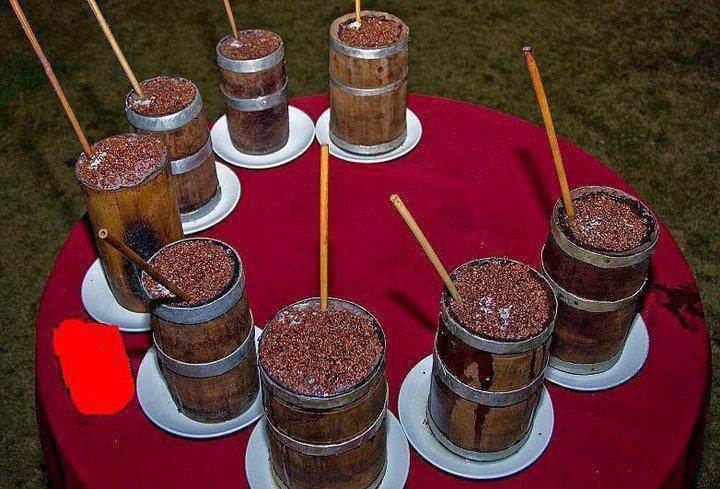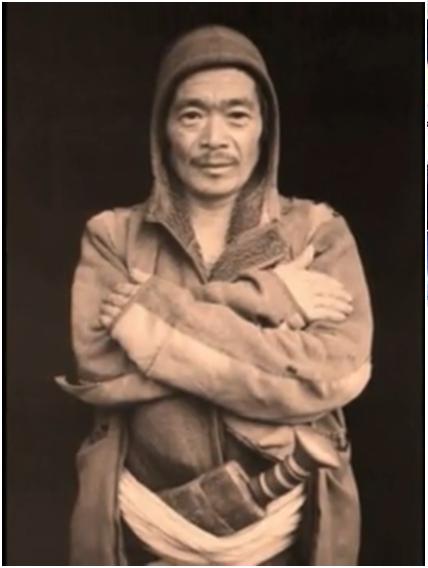|
Chasok Tangnam
Chasok Tangnam is a festival of the Limbu people The Limbu (Limbu language, Limbu: ) are a Sino-Tibetan ethnolinguistic group indigenous to the Himalayan region of eastern Nepal, northeastern India and western Bhutan. In India, the Limbus live in the Indian state, states of Sikkim, Assam, N ... which falls on a full moon day of the month of ''Senchengla'' or the Mangsir month of the Nepali calendar. The festival is marked with the first harvest being offered to God Yuma Sammang and other deities and exchanging cordiality with each other.https://kathmandupost.com/visual-stories/2022/11/19/glimpses-of-chasok-tangnam-festival References Culture of Nepal Kirat festivals Festivals in Nepal Limbu culture {{Asia-festival-stub ... [...More Info...] [...Related Items...] OR: [Wikipedia] [Google] [Baidu] |
Limbu People
The Limbu (Limbu language, Limbu: ) are a Sino-Tibetan ethnolinguistic group indigenous to the Himalayan region of eastern Nepal, northeastern India and western Bhutan. In India, the Limbus live in the Indian state, states of Sikkim, Assam, Nagaland and northern West Bengal, i.e. North Bengal. Subba is a title given by the Shah Kings only to Limbu village chiefs. Subba was not an indigenous Limbu terminology, but now the two terms are almost interchangeable. It was how the village chiefs were distinguished from other villagers in Limbu tribe. Family lineage of the village chiefs are often found with their surname as Subba. Their history is said to be written in a book called Bangsawoli (Genealogy), also known as Bansawali. Some ancient families have kept copies. There are hundreds of Limbu clans and tribes, classified under their tribe or subnational entity or according to their place of origin. The Chinese text ''Po-ou-Yeo-Jing'', translated in 308 AD, refers to the Yi-ti-S ... [...More Info...] [...Related Items...] OR: [Wikipedia] [Google] [Baidu] |
Tongba
Tongba ( ) is a millet-based alcoholic beverage found in the eastern mountainous region of Nepal and neighbouring Indian regions of Sikkim and Darjeeling. It is a sign of respect to a guest, and the drink is also an important element of special occasions and festivals. It is the traditional and indigenous drink of the Limbu people. Preparation ''Tongba'' is actually the name of the vessel that holds the fermented millet beverage known as ''mandokpenaa thee''. Tongba is prepared from brown finger millet (''Eleusine coracana'', also known as ragi in India or kodo in Nepal) grown in hilly regions, and it is cooked and combined with traditionally cultured khesung, which is a microbial colony or starter culture. 'Khesung' is the Limbu version of the Nepali term 'murcha'; the Lepchas call it 'thamik', and Bhutias refer to it as 'phab'. Ethno-medicinal properties Tongba is a fermented millet beer from the Himalayas that contains biologically active components that may have the ... [...More Info...] [...Related Items...] OR: [Wikipedia] [Google] [Baidu] |
Mangsir
Mangsir () is the eighth month in the Bikram Samwat, the official Nepali calendar. This month coincides with the mid-November to mid-December of the Gregorian calendar. Important events during this month include: *Mangshir purnima (Full Moon), Udhauli (public holiday), Chhath Chhath is an ancient Hindu festival, native to eastern India and southern Nepal. It is celebrated especially in the Indian states of Bihar, Jharkhand, and Eastern Uttar Pradesh; and Koshi, Gandaki, Bagmati, Lumbini and Madhesh province ... (it usually falls in Kartik but in 2015 it fell in Mangsir) Months in the Nepali calendar References Nepali Calendar 2074New Nepali Calendar 2074Nepali Calendar Nepali calendar {{Nepal-culture-stub ... [...More Info...] [...Related Items...] OR: [Wikipedia] [Google] [Baidu] |
Vikram Samvat
Vikram Samvat (ISO: ''Vikrama Saṁvata''; abbreviated VS), also known as the Vikrami calendar is a Hindu calendar historically used in the Indian subcontinent and still also used in several Indian states and Nepal. It is a lunisolar calendar, using twelve to thirteen lunar months each solar sidereal years. The year count of the Vikram Samvat calendar is usually 57 years ahead of the Gregorian calendar, except during January to April, when it is ahead by 56 years. Vikram Samvat is an official calendar of Nepal. And unlike India where it is used only for religious dates, the solar version of Vikram Samvat is an official calendar used for everything from school sessions to legal contracts to any official functions. History A number of ancient and medieval inscriptions used the Vikram Samvat. Although it was reportedly named after the legendary king Vikramaditya, the term "Vikrama Samvat" does not appear in the historical record before the 9th century; the same calendar sy ... [...More Info...] [...Related Items...] OR: [Wikipedia] [Google] [Baidu] |
Yuma Sammang
Yuma Sammang is the goddess of the Limbu community of Nepal. The deity Yuma Sammang (literally: "Mother Earth" or "Grandmother"), also known as Ningwaphuma, is widely revered and regularly worshiped among Yakthungs (Limbus). Yakthungs generally regard Yuma as a maternal figure. The Yuma Samyo or Yuma religion was very popular during the Yet Hang and Thibong Yakthung (Ten Yakthung) ages. The Yakthung community is predominantly an oral culture. The body of its oral tradition is called Mundhum. Mundhum is a collection of diverse oral narratives addressing topics such as the creation of the universe, human beings, animals, and plants along with many other elements. The Yakthung culture includes Mundhum performers, such as Phedangma, Yeba, Yema, Shamba, Samma, and Tutu-Tumyahangs. Despite Western cultural colonization and the influence of Hinduism, Buddhism, and Christianity Christianity is an Abrahamic monotheistic religion, which states that Jesus in Christianity, Jesus is ... [...More Info...] [...Related Items...] OR: [Wikipedia] [Google] [Baidu] |
Culture Of Nepal
The culture of Nepal encompasses the various cultures belonging to the 125 distinct ethnic groups present in Nepal. The culture of Nepal is expressed through music and dance; art and craft; folklore; languages and literature; philosophy and religion; festivals and Party, celebration; foods and drinks. Dance and music Legends state that dances in this country originated in the abode of Lord Shiva — the Himalayas, where he performed the tandava dance. This indicates that dance traditions of Nepal are very ancient and unique. With altitudes and ethnicity, the dances of Nepal slightly change in style as well as in the costumes. The Dishka, a dance performed at weddings, includes intricate footwork and arm movements. Accompanying music and musical instruments change in tune with the themes, which revolve around topics like harvesting of crops, marriage rites, war stories,love, and several other themes and stories from everyday life in the villages. The Tharu stick dances and the ... [...More Info...] [...Related Items...] OR: [Wikipedia] [Google] [Baidu] |
Kirat Festivals
The Kirati people, also spelled as Kirat or Kirant or Kiranti, are Tibeto-Burman ethnolinguistic groups living in the Himalayas, mostly the Eastern Himalaya extending eastward from Nepal to North East India (predominantly in the Indian state of Sikkim and the northern hilly regions of West Bengal, that is, Darjeeling and Kalimpong districts). Etymology The term "Kirat" has a rich and complex etymology rooted in the cultural and historical contexts of the eastern Himalayas. The Kirat people, who are indigenous to the region encompassing parts of Nepal, India, and Bhutan, trace their name back to ancient traditions and languages. The etymology of "Kirat" is believed to derive from the Sanskrit term "Kirāta," which originally referred to the indigenous tribes of the region, particularly those living in the hilly and mountainous areas of ancient India. In Sanskrit and classical texts, "Kirāta" was used to describe the people inhabiting the rugged terrains of the eastern Himalay ... [...More Info...] [...Related Items...] OR: [Wikipedia] [Google] [Baidu] |
Festivals In Nepal
Main festivals Nepal stands as a unique example of a secular and multicultural nation where diverse festivals are joyfully celebrated within communities. In Nepal, individuals of varying religious backgrounds coexist in the same neighborhoods and societies, fostering a spirit of unity as they come together to share in the celebrations of a multitude of festivals, thus sharing their joys, happiness, and sorrows as a harmonious whole. Dashain ''Dashain'' (; , also ''Baḍādaśhãin'' or ''Bijayā Daśamī'' ) is the 15-day-long festival and holidays of Nepal. It is the longest and the most auspicious festival in the Nepalese annual calendar, celebrated by Nepalese Hindu people throughout the globe. It is not only the longest festival of the country, but also the one which is most anticipated. As one of the popular countries, Nepal has its Hindu festival as Dashain. The festival falls in September or October, starting from the shukla paksha (bright lunar fortnight) of the month ... [...More Info...] [...Related Items...] OR: [Wikipedia] [Google] [Baidu] |




